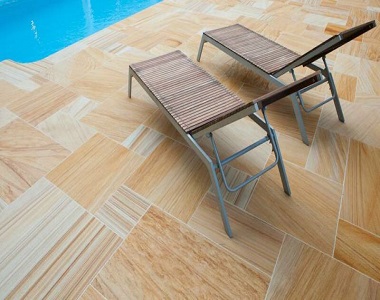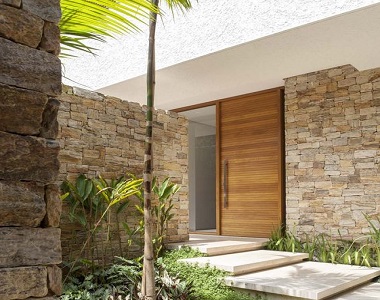
🐰 We are closed 29th of March to 1st of April. Back Open on 2nd of April. 🐰
Call: 03 9706 9767
Mon-Fri 7:30am - 5pm / Sat 9am - 4pm
🐰 We are closed 29th of March to 1st of April. Back Open on 2nd of April. 🐰
Mon-Fri 7:30am - 5pm / Sat 9am - 4pm
by Rashmi Batham | Jan 31, 2017 |
Sandstone pavers come in several different colors and designs. While some homeowners love the look of pale grey and light blue pavers, others like the more natural look of tan and brown.
The lighter shades often resemble slate and other more expensive materials, but the cost of sandstone pavers is less than the cost of other types of pavers. Often used for patios and paths, homeowners will find that they can use sandstone in a variety of ways around their home.
Though some focus primarily on the cost of those pavers, they also need to think about the advantages, disadvantages and how they want to use those pavers. The Costs Average cost of sandstone pavers: Between $28 – $50m2 inc GST (dependent on colour, size and surface finish). Sandstone comes in a variety of texture and shades such as Teakwood Sandstone, Himalayan sandstone, Honed Sandstone pavers, Rainbow sandstone pavers and more.

While sandstone is durable enough to use as patio pavers, driveway pavers and swimming pool pavers. Most homeowners opt for outdoor pavers installation.
The material is durable and strong enough that it can handle constant use, and it works well around swimming pools and other water features.
Sandstone pavers placed side by side can make an elegant and gorgeous patio, and some homeowners use the pavers to make pathways that connect multiple outdoor entertaining areas or to connect a swimming pool to a patio.

Designers also use sandstone pavers on top of gravel, which makes the pavers appear to float over the surface of the ground.
Installing sandstone pavers is as easy as installing any other type of pavers, but after looking at how much time the project takes, many homeowners decide to hire a contractor or a professional installer to do the job.
When placed directly on the grass, sandstone can slip and move, which can cause injuries. It’s important to use an aggregate material on top of the grass that keeps the pavers from slipping.
Designers will typically work out the finished design with the homeowners and arrange the pavers on the ground, giving the homeowners the chance to decide if they want to make any changes.
The designer will then mark the ground around each paver and remove the pavers. He or she removes the top layer of grass and dirt, adds a layer of sand or gravel and smooths out the material.
After ensuring that the level is even, the designer will place the pavers on top of the material. While some might assume this is the last step, the designer will still need to add more gravel to the top. The gravel falls between the pavers to add an additional layer of protection.
One of the biggest advantages associated with sandstone is that the material is naturally porous.
Other materials, including slate, aren’t porous. When water splashes on top of the pavers, it pools on top and forms puddles that make the pavers slick.
When the water reaches sandstone, the pavers will pull the water into the stone and let it slip out the bottom. This makes the material great for use outside near a swimming pool, pond or another type of water feature.
Many homeowners prefer sandstone over other materials because it is a natural material. They don’t need to worry about manufacturers releasing toxins into the environment or what their purchase will mean for the environment.
Manufacturers break large sandstone blocks into individual pavers, and they can further break down those pieces into smaller pavers and pavers with unique or unusual designs.
Though sandstone has a number of advantages, homeowners should also beware of the potential problems with the material. The first is that the installer of the sandstone should offer to seal the material.
As sandstone is porous, it can easily develop stains. Spilling a glass of soda or wine on the ground can cause the pavers to develop dark gray, brown or red stains on the surface.
Stains can also occur as people walk across the pavers and transfer dirt and mud onto the stone. Homeowners can buy pavers already stained from manufacturers, or they can opt to seal the pavers before or after installation. Many homeowners don’t think about maintenance and upkeep when choosing outdoor features.
While sandstone is a strong material, it requires 6-12 monthly cleaning with a domestic gernie. This also typically involves sweeping off any debris prior to water jet blasting with your gernie.
Homeowners will also need to purchase a specialty cleaner that they mix with water, apply to the sandstone and rinse off with additional water. Using the wrong cleaning material can leave behind stains or even damage the sandstone.
As sandstone is a natural material, it costs a little more than concrete. The cost of finding the sandstone and breaking the stone into smaller pieces adds to the overall cost.
Natural stone pavers typically cost between $28 – $50m2 inc GST (dependent on colour, size and surface finish), but sandstone pavers are often on the lower end of that price range. Materials like slate and granite are more expensive than sandstone.
The cost of the individual pavers also depends on the shape, size and design that the homeowners choose. Pavers in unique designs and shapes other than squares, including round designs, often cost more.
Homeowners also need to consider some other factors when choosing sandstone. If they buy the pavers directly from the manufacturer, they need to arrange for shipping or delivery, which can add a few hundred dollars to the cost.
Many people also forget to look at the cost of labor and installation. It can take up to 30 hours to complete the project, depending on the size of the project. Some homeowners will even find that it takes several weeks before the installers complete the project.

Installation costs can easily add an extra $1,000 or more to the total cost. Most laborers charge an square meter fee, and homeowners are responsible for paying the prescribed rate for every person working on the job.
Those who decide to do the job themselves will need to factor in the cost of renting the equipment needed for the job, including a masonry saw. After looking at the rental costs, many homeowners may decide to go with a contractor who already has that equipment.
Looking for sandstone pavers and sandstone tiles to build your dream home? Great! You have come to the right place. We are currently running the Biggest SALE of the year and reduced all the sandstone tiles to CLEARANCE.
We provide FREE SAMPLES + FREE QUOTE + FREE EXPERT STONEMASON ADVICE. You are just a phone call away. Give us a call today on (03) 9706 9767 and receive a price estimate on your choice of pavers.




